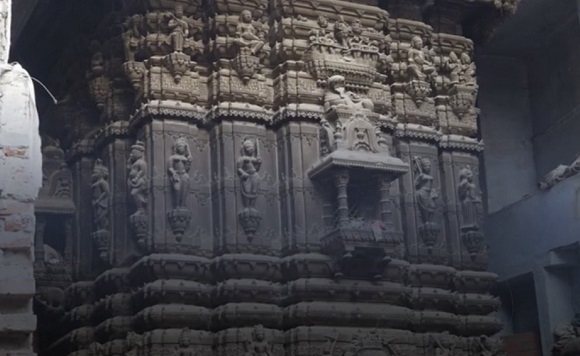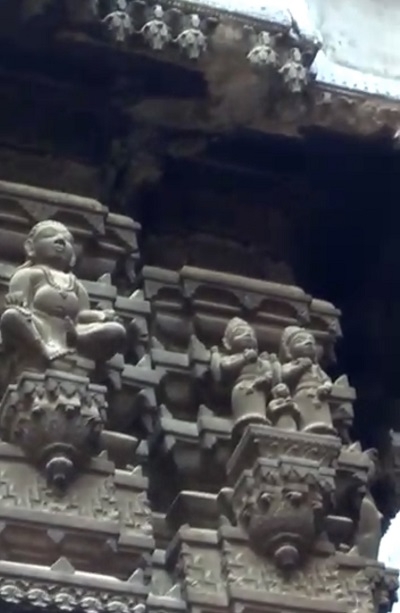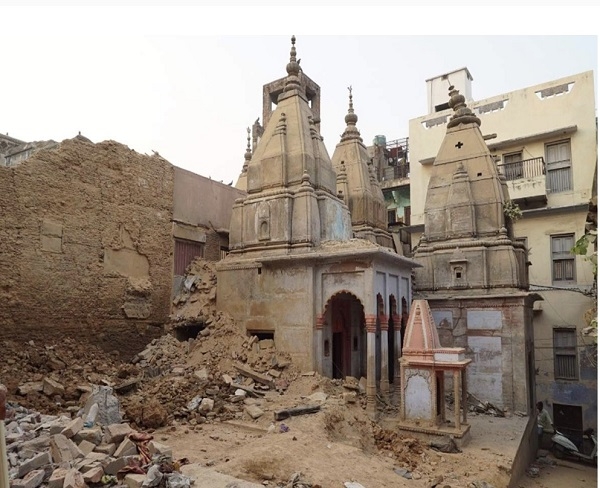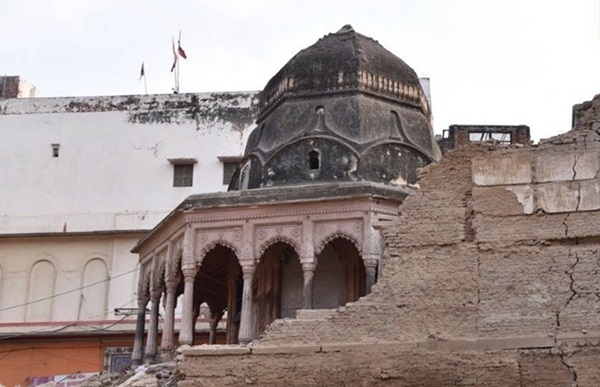Discovery of 40 ancient temples at Kashi are proofs screaming out to be our glorious history
10 Jun 2020 11:11:38
-Manisha Inamdar
More than 40 ancient temples—which have historic and religious significance as per ‘Kashi Khand of Skand Puran’—were discovered during clearing process of “Kashi Vishwanath Dham Corridor” in Kashi. Discovery of more than 40 ancient temples—which were hidden behind the wall of residential and commercial buildings of the city of Kashi—has scratched the surface of Kashi’s brutalised history. Hence, it poses some disturbing questions: Were these temples hidden by overlaying constructions to protect from desecration and destruction by foreign invaders? Or they were illegally occupied for generations? If it was the case of encroachment, why the recovered temples are still safe and intact?

Kashi Vishwanath temple, which is one of the twelve Jyotirlingas, stands on the western bank of the holy river, Ganga in Kashi, Uttar Pradesh. Despite being the holiest of Shiva Temple, ‘Kashi Vishwanath Temple’ is surrounded by narrow lanes, which are full of dilapidated buildings with crumbling basic facilities and infrastructure. It was nightmare for fire-fighting system and medical facilities to reach to the pilgrims. The idea behind “Kashi Vishwanath Dham Corridor,” an ambitious project of PM Modi, who laid its foundation stone on March 2019, is to end the hardships and ensure the world class facilities for the devotees in and around the temple.

Kashi, Varanasi, Benares, three different names denote different era's history of this city. Kashi is India’s spiritual capital where great scholars, sages, saints, authors, teachers, classical musicians, philosophers, poets and learners came to spread his messages. This is the land
- Where Goswami Tulsidas spent most of his life. He wrote Ramcharitamanas while travelling to Ayodhya and Kashi to and fro.
- Where Adi Shankaracharya has written Manisha Panchakam.
- Four of Jain Tirthankaras Suparshvanath(7th), Chandraprabhu(8th), Shreyanshnath (11th) and Parshvanath(23th) Tirthankaras were born.
- After attaining enlightenment at Bodh Gaya, Gautama Buddha went to Sarnath—10 kilometres north-east of Kashi—to deliver his first sermon after enlightenment.
- Where Guru Gobind Singh sent the five Sikhs to study Sanskrit, later their teachings were called the Nirmala Sikhs.
- Where Mahamana Madan Mohan Malviya founded Banaras Hindu University

Kashi, which has documented golden history of more than 3500 years, however, archeological excavations proves it is more than 8000 years old. Kashi was also subjected to death, destruction and brutally. The city was ravaged innumerable times by foreign invaders while Indian rebuilt it after its destruction. Qutb-al-din Aibak, who was commander of Mohammad Ghori, destroyed the original Vishwanath temple in 1194. Hundred years later, the temple was rebuilt by a Gujarati merchant. Mahmud Shah, the Sultan of Jaunpur again demolished the Vishwanath Temple in 1447. Raja Todarmal rebuilt the temple at its original site in 1585. In 1632, Shah Jahan had passed the order to demolish Kashi Vishwanath Temple. However, his armies could not destroy Kashi Vishwanath Temple due to strong opposition of Hindus, but succeeded to demolished 63 temples in Kashi.
On 18 April 1669, Aurangzeb issued a decree ordering the demolition of Kashi Vishwanath temple. This decree is still preserved at the Asiatic Library, Kolkata. In September 1669, Aurangzeb demolished the temple and built the Gyanvapi Mosque at its place. Appropriate words would be: the older version and the original location of the Kashi Vishwanath Temple is the ‘Gyanvapi Mosque.’ The remnants of the ancient Hindu temple can be seen on the walls of the Gyanvapi mosque even today. It openly displays significant portions of the walls of the original temple. The current temple was built on an adjacent site by the Maratha ruler, Ahilya Bai Holkar of Indore in 1780.

There is a small well in the temple called Gyaan vapi (the wisdom well) also spelled as Jnana Vapi. It is said that the main priest of the temple jumped into the well with Jyotirlinga to protect it from invaders. Such brutality used to be inflicted to those who tried to save temples.
It is fortunate that, more than 40 temples with architectural marvels have been recovered INTACT, obscured behind the walls since demolition of purchased buildings started in December 2019 unlike incalculable temples and heritages which were razed across India by foreign invaders. Nalanda University, Vikramsila University, Martand Sun Temple, story of death, destruction and brutality is unending.
Latest discovery of a beautiful temple near Dhundhiraj Ganesh ji temple at Gate no 1 of Shri Kashi Vishwanath Dham.#ShriKashiVishwanath #CorridorProject #Discovery #Temple #ShriKashiVishwanathTemple #Gate #Entrance #GaneshTemple #Dundhiraj #Found #Varanasi #CEO #VishalSingh pic.twitter.com/0YVwFurT5p
— IAS Vishal Singh (@VishalSinghIAS) March 7, 2020
Demolition of heritage is an easy way to destroy the civilizations of nation. This is how foreign invaders tried to demolish our civilisation. History is a great teacher. Those who do not learn from history, those who do not remember their past are condemned, are destined to repeat the same mistakes. Discovery of more than 40 ancient temples are concrete proof of our history which is described and dismissed as mythology. It is high time to connect people of India with their glorious past as these concrete proofs are screaming out to be our glorious history.